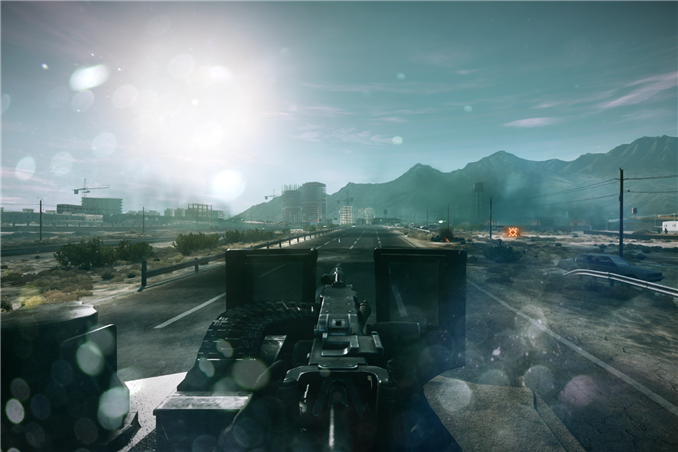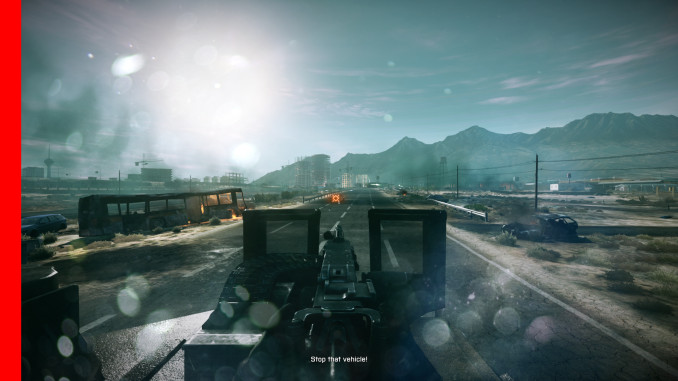FCAT: The Evolution of Frame Interval Benchmarking, Part 1
by Ryan Smith on March 27, 2013 9:00 AM EST
In the last year, stuttering, micro-stuttering, and frame interval benchmarking have become a very big deal in the world of GPUs, and for good reason. Through the hard work of the Tech Report’s Scott Wasson and others, significant stuttering issues were uncovered involving AMD’s video cards, breaking long-standing perceptions on stuttering, where the issues lie, and which GPU manufacturer (if anyone) does a better job of handling the problem. The end result of these investigations has seen AMD embarrassed and rightfully so, as it turned out they were stuttering far worse than they thought, and more importantly far worse than NVIDIA.
The story does not stop there however. As AMD has worked on fixing their stuttering issues, the methodologies pioneered by Scott have gone on to gain wide acceptance across the reviewing landscape. This has the benefit of putting more eyes on the problem and helping AMD find more of their stuttering issues, but as it turns out it has also created some problems. As we laid out in detail yesterday in a conversation with AMD, the current methodologies rely on coarse tools that don’t have a holistic view of the entire rendering pipeline. And as such while these tools can see the big problems that started this wave of interest, their ability to see small problems and to tell apart stuttering from other issues is very limited. Too limited.
In their conversation AMD laid out their argument for a change in benchmarking. A rationale for why benchmarking should move from using tools like FRAPS that can see the start of the rendering pipeline, and towards other tools and methods that can see the end of the rendering pipeline. And AMD was not alone in this; NVIDIA too has shown concern about tools like FRAPS, and has wanted to see testing methodologies evolve.
That brings us to this week. Often evolution is best left to occur naturally. But other times evolution needs a swift kick in the pants. This week NVIDIA has decided to give evolution that swift kick in the pants. This week NVIDIA is introducing FCAT.
FCAT, the Frame Capture Analysis Tool, is NVIDIA’s take on what the evolution of frame interval benchmarking should look like. By moving the measurements of frame intervals from the start of the rendering pipeline to the end of the pipeline, FCAT evolves the state of benchmarking by giving reviewers and consumers alike a new way to measure frame intervals. A year and a half ago the use of FRAPS brought a revolution to the 3D game benchmarking scene, and today NVIDIA seeks to bring about that revolution all over again.
FCAT is a powerful, insightful, and perhaps above all else labor intensive tool. For these reasons we are going to be splitting up our coverage on FCAT into two parts. Between trade shows and product launches we simply have not had enough time to put together a complete and proper dataset for FCAT, so rather than to do this poorly, we’re going to hold back our results until we’ve had a chance to run all of the FCAT tests and scenarios that we want to run
In part one of our series on FCAT, today we will be taking a high-level overview of FCAT. How it works, why it’s different from FRAPS, and why we are so excited about this tool. Meanwhile next week will see the release of part two of our series, in which we’ll dive into our FCAT results, utilizing FCAT to its full extent to look at where FCAT sees stuttering and under what conditions. So with that in mind, let’s dive into FCAT.
Reprise: When FRAPS Isn’t Enough
Since we covered the subject of FRAPS in great detail yesterday, we’re not going to completely rehash it. But for those of you who have not had the time to read yesterday’s article, here’s a quick rundown of how FRAPS measures frame intervals, and why at times this can be insufficient.
Direct3D (and OpenGL) uses a complex rendering pipeline that spans several different mechanisms and stages. When a frame is generated by an application, it must travel through the pipeline to Direct3D, the video drivers, a frame queue (the context queue), a GPU scheduler, the video drivers again, the GPU, and finally after that a frame can be displayed. The pipeline analogy is used here because that’s exactly what it is, with the added complexity of the context queue sitting in the middle of that pipeline.
FRAPS for its part exists at almost the very beginning of this pipeline. It interfaces with individual applications and intercepts the Present calls made to Direct3D that mark the end of each frame. By counting Present calls FRAPS can easily tell how many frames have gone into the pipeline, making it a simple and effective tool for measuring average framerates.
The problem with FRAPS as it were, is that while it can also be used to measure the intervals between frames, it can only do so at the start of the rendering pipeline, by counting the time between Present calls. This, while better than nothing, is far removed from the end of the pipeline where the actual buffer swaps take place, and ultimately is equally removed from the end-user experience. Furthermore because FRAPS is so far up the rendering pipeline, it’s insulated from what’s going on elsewhere; the context queue in particular can hold up to 3 frames, which means the rate of flow into the context queue can at times be very different from the rate of flow outside of the context queue.
As a result FRAPS is best descried as a coarse tool. It can see particularly egregious stuttering situations – like what AMD has been experiencing as of late – but it cannot see everything. It cannot see stuttering issues the context queue hides, and it’s particularly blind to what’s going on in multi-GPU scenarios.












88 Comments
View All Comments
Ryan Smith - Friday, March 29, 2013 - link
If there is frame metering, then FCAT would show results with highly regular frames with few-to-no runt frames. So in a roundabout way it proves frame metering/pacing; you wouldn't have that kind of smoothness without it.Andromeduck - Saturday, March 30, 2013 - link
Not delaying fast frames would cause stuttering game time.Try again.
Despoiler - Wednesday, March 27, 2013 - link
Can't wait for part 2!Found a couple of typos in this sentence, "By using a PC capture card, the *entre* run of a benchmark can be captured and recorded to *vide* for analysis."
Torrijos - Wednesday, March 27, 2013 - link
It gets interesting ^^ A year and a half later, but still.It would be interesting to have a FRAPS comparison result to see the improvements with this method.
Also I'm wondering about the cases where frames pass almost invisibly with only a few lines (or none?) been drawn to the screen (due to the screen / capture card refresh rate).
Does the tool detect such cases? (through knowing the order in which the colour overlay is supposed to happen it could detect frames that weren't drawn, while being unable to provide timing for those)
I've seen a couple more articles on news methods that forgo FRAPS...
http://www.pcper.com/reviews/Graphics-Cards/Frame-...
Torrijos - Wednesday, March 27, 2013 - link
Commenting my own post (sic) to say that the pcper articles shows comparison between this new method and FRAPS and the old FPS average value, pretty interesting.DanNeely - Wednesday, March 27, 2013 - link
Yeah. It looks like pcper homebrewed the same sort of tool nVidia did internally. It'll be interesting to compare analysis options when part 2 is up.Klimax - Thursday, March 28, 2013 - link
Here you go:http://techreport.com/review/24553/inside-the-seco...
Short story: You cannot stop using FRAPS unless one wants to miss part of story not visible at the end of pipeline. (FRAPS and FCAT are complementing not supplanting)
tynopik - Wednesday, March 27, 2013 - link
"we have long waned" -> wanted (pg3)colinstu - Wednesday, March 27, 2013 - link
Techreport has been doing this for months. It's a great measurement and definitely the way of the future when it comes to comparing cards. Sites holding onto FPS only reviews are stuck in the past.Novulux - Wednesday, March 27, 2013 - link
You may have missed the point of this article as well as the prior one. Techreport utilizes Fraps, which is what's being criticized. Simply because they may be waiting for the correct tool does not define many sites as "stuck in the past."